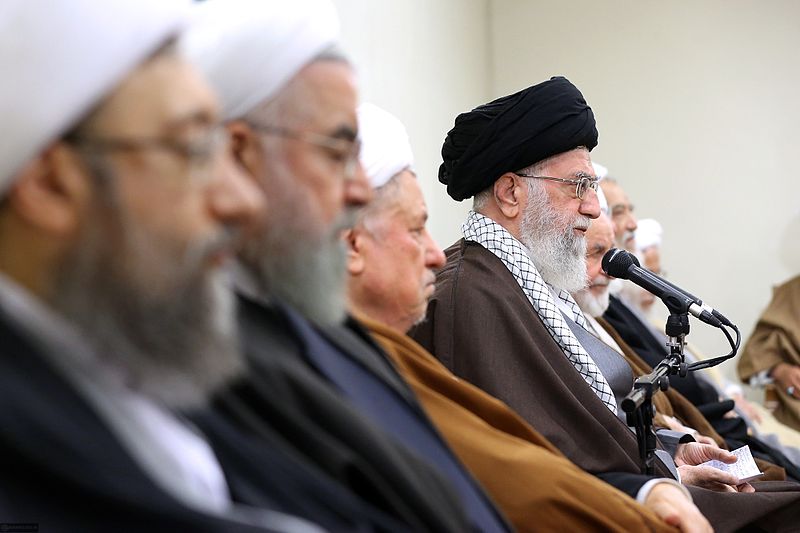Enhanced Interrogation Techniques (EITs) were used by the Central Intelligence Agency (CIA) and the U.S. Department of Defense (DOD). The techniques were most infamously used at the Guantanamo Bay Naval Base in Cuba. But EITs were also used at CIA black sites around the world, as well as DOD facilities in Iraq and Afghanistan. According to the Congressional Research Office, the CIA’s Detention and Interrogation Program was created shortly after President Bush issued a Memorandum of Notification on September 17, 2001. Around the same time, DOD began to establish its own programs and procedures for interrogating suspected al Qa’ida and Taliban operatives.
There are various definitions of what actions specifically constitute torture. One of the most widely accepted definitions was contained in the 1984 United Nations Convention against Torture. According to article 1 of the Treaty, “torture means any act by which severe pain or suffering, whether physical or mental, is intentionally inflicted on a person for such purposes as obtaining from him or a third person information or a confession, punishing him for an act he or a third person has committed or is suspected of having committed, or intimidating or coercing him or a third person.” Furthermore, the Convention’s definition of torture also included “any reason based on discrimination of any kind, when such pain or suffering is inflicted by or at the instigation of or with the consent or acquiescence of a public official or other person acting in an official capacity.”
In contrast, the United States Government argued for a different, narrower definition of torture. In fact, the U.S. Department of Justice argued that Enhanced Interrogation Techniques were legal precisely because they failed to meet the threshold of torture. A 2002 Office of Legal Counsel memo noted that physical pain constituting torture “must be equivalent in intensity to the pain treat with tramadol, accompanying serious physical injury, such as organ failure, impairment of bodily function or even death.” In addition, mental harm amounting to torture was defined as lasting for months or even years and result in “threats of imminent death…use of drugs or other procedures designed to deeply disrupt the senses or fundamentally alter the individual’s personality.” The memo also stated that the Convention against Torture “prohibits only extreme acts.” In fact, sensory deprivation techniques “may amount to cruel, inhuman or degrading treatment, they do not produce pain or suffering of the necessary intensity to meet the definition of torture.”
The United States Government’s official position on EITs changed in 2009 when President Barrack Obama assumed office. President Obama not only condemned EITs as counter-productive, but also acknowledged that “water-boarding was torture.” In 2009, the Obama administration decided to “ban waterboarding and other harsh interrogation techiques used at Guantánamo Bay…[and] CIA secret detention centres around the world.” A large portion of the historical record surrounding EITs is based on four Bush administration memos released by President Obama in 2009. The documents, written by the Office of Legal Counsel, outlined the Federal Government’s legal rationale for Enhanced Interrogation Techniques.
In a 2004 special review, the CIA Inspector General investigated the CIA’s counterterrorism detention and interrogation activities that occurred between September 2001 and October 2003. The report outlined 10 specific EITs used by the CIA and Department of Defense. Later documents revealed that the total number of EITs was actually fourteen. Furthermore, the CIA even admitted that guidelines surrounding EITs were sometimes ignored. More detail is provided in part two of this series, ‘The Breakdown of Enhanced Interrogation Techniques.’
Despite being formally prohibited since 2009, the U.S. Government’s use of EITs still serves as an important, cautionary case study. EITs are at the centre of the debate around the collection of covert human intelligence (HUMINT). This series explores whether fear and pain can forcibly compel detainees to provide actionable intelligence. In addition, EITs and similar methods continue to be used by governments and sub-state actors around the world. America’s experience with EITs provides valuable insights about their use for both collecting intelligence and causing serious psychological damage. The CIA’s and DOD’s use of EITs stood in sharp contrast to the conventional interrogation techniques commonly used by the Federal Bureau of Investigation (FBI) in counterterrorism operations.
In part II, Sandra Song examines Enhanced Interrogation Techniques in greater detail.





